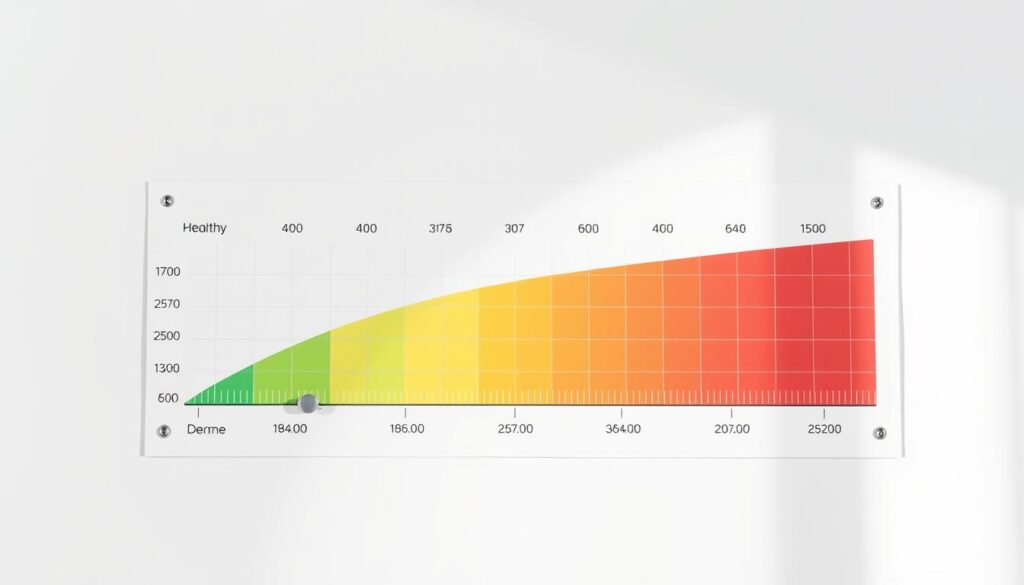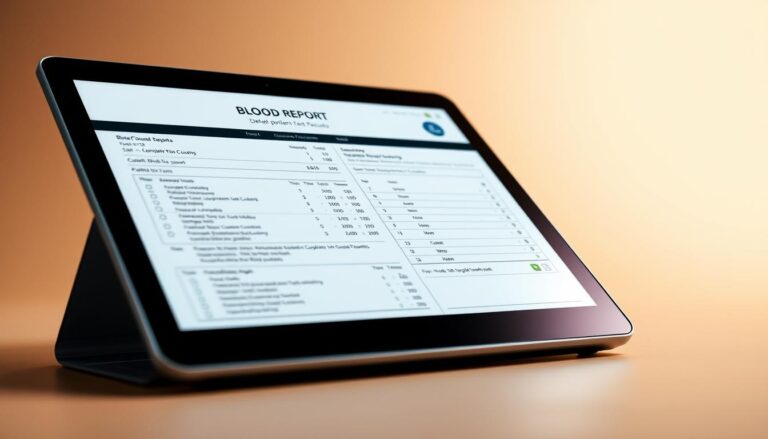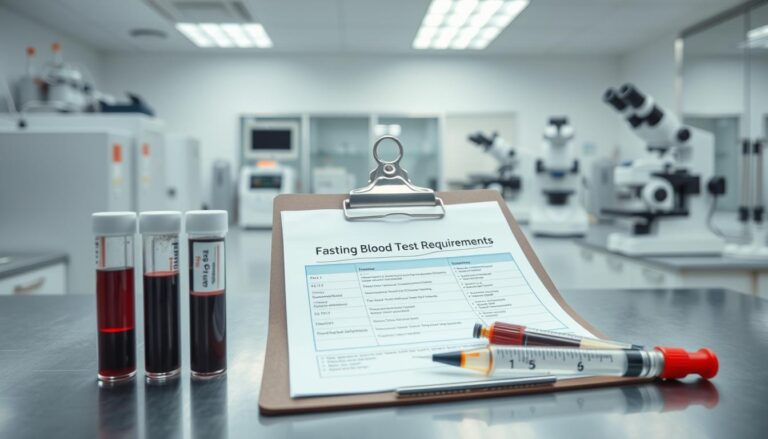Understanding Normal Blood Sugar Levels: Complete Guide
What is the ideal normal blood sugar levels range for a healthy individual? How can we keep our blood sugar levels healthy to avoid diabetes complications? We’ll dive into these questions and more in this detailed guide. For adults, normal fasting blood sugar levels are between 70 and 100 mg/dL. Keeping our blood glucose levels in check is key for managing diabetes.
The World Health Organization (WHO) says the normal fasting blood glucose range is 70 to 100 mg/dL, or 3.9 to 5.6 mmol/L. We’ll talk about why knowing your blood sugar levels is important. We’ll cover what affects them, how to measure and monitor them, and how to keep your blood glucose levels optimal for diabetes management.

Whether you have diabetes or just want to stay healthy, knowing about normal blood sugar levels is vital. We’ll share all you need to know about blood sugar levels. This includes how to keep your levels healthy and prevent diabetes complications in this guide.
What Affects Normal Blood Sugar Levels Range
Keeping our blood sugar levels in check is vital for our health. Many things can change how our blood sugar chart readings look. It’s important to know what affects these levels, like diet, exercise, and hormones. This knowledge helps us keep our blood sugar in a healthy range.
Age plays a big role in blood sugar levels. Kids, teens, adults, and seniors have different blood sugar goals. Stress, illness, and pain can also raise blood sugar because of hormone changes. Not drinking enough water can affect blood sugar levels too.
Other things like menstrual cycles and drinking alcohol can also change blood sugar levels. Using a blood sugar meter regularly helps people stay on top of their levels. This is important for many with diabetes. By knowing these factors and following guidelines, we can keep our blood sugar healthy and avoid diabetes and other health problems.
Here are some important points for monitoring blood sugar levels:
- Typical blood sugar target before a meal: 80 to 130 mg/dL
- Typical blood sugar target two hours after the start of a meal: Less than 180 mg/dL
- Blood sugar level considered low (hypoglycemia): Below 70 mg/dL
By understanding these factors and living a healthy lifestyle, we can keep our blood sugar levels normal. This helps us avoid diabetes and other health issues. Keeping an eye on our blood sugar and following guidelines is key to staying healthy.
Measuring and Monitoring Blood Glucose Levels
Managing diabetes means keeping an eye on blood glucose levels. We use a guide to know what’s normal. A chart shows normal levels are between 4 to 6 mmol, or 72 to 108 mg/dL.
To check levels, we use a blood sugar meter. It gives us an exact reading. It’s key to use it right and track our numbers. This helps us spot any changes or trends in our levels.
Here are some important tips for checking and tracking blood glucose levels:
- Use a blood sugar meter to measure blood glucose levels
- Keep track of readings to identify changes or trends
- Use a normal glucose level chart to determine what is a normal blood sugar level
- Monitor blood glucose levels regularly to maintain healthy levels
By following these steps and using a blood sugar level guide, we can effectively measure and monitor our blood glucose levels. This is key to keeping our levels healthy and avoiding complications.
Understanding Blood Sugar Variations Throughout the Day
Our blood sugar levels change a lot during the day. It’s key to know these changes to keep our levels healthy. Normal fasting blood sugar is between 70 to 100 mg/dL. After eating, it should be under 180 mg/dL.
Our blood sugar can change a lot. It’s important to watch it to see any patterns. This helps us understand our body better.
The American Diabetes Association (ADA) has rules for blood sugar levels. They say adults with type 1 diabetes should aim for fasting levels of 80 to 130 mg/dL. After meals, it should be under 180 mg/dL. Knowing these rules helps us keep our blood sugar in check.
- Before meals: 80 to 130 mg/dL
- After meals: less than 180 mg/dL
- At bedtime: 90 to 150 mg/dL (for children with type 1 diabetes)
By understanding how blood sugar changes, we can make better choices. This includes what we eat, how much we exercise, and our medication. It helps us keep our blood sugar levels healthy.
Conclusion: Maintaining Healthy Blood Sugar Levels
Keeping our blood sugar levels healthy is key to our overall well-being. By understanding what affects our blood glucose, we can take steps to manage it. This helps prevent serious conditions like diabetes and keeps our bodies working well.
The normal blood sugar range changes due to many factors, like what we eat and how much we exercise. By checking our blood sugar often and making lifestyle changes, we aim to meet the targets set by health experts.
It’s important to remember that managing blood sugar is unique for each person. We need to work closely with healthcare experts who can give us personalized advice. With their help, we can achieve the best blood sugar control and live a healthier life.







